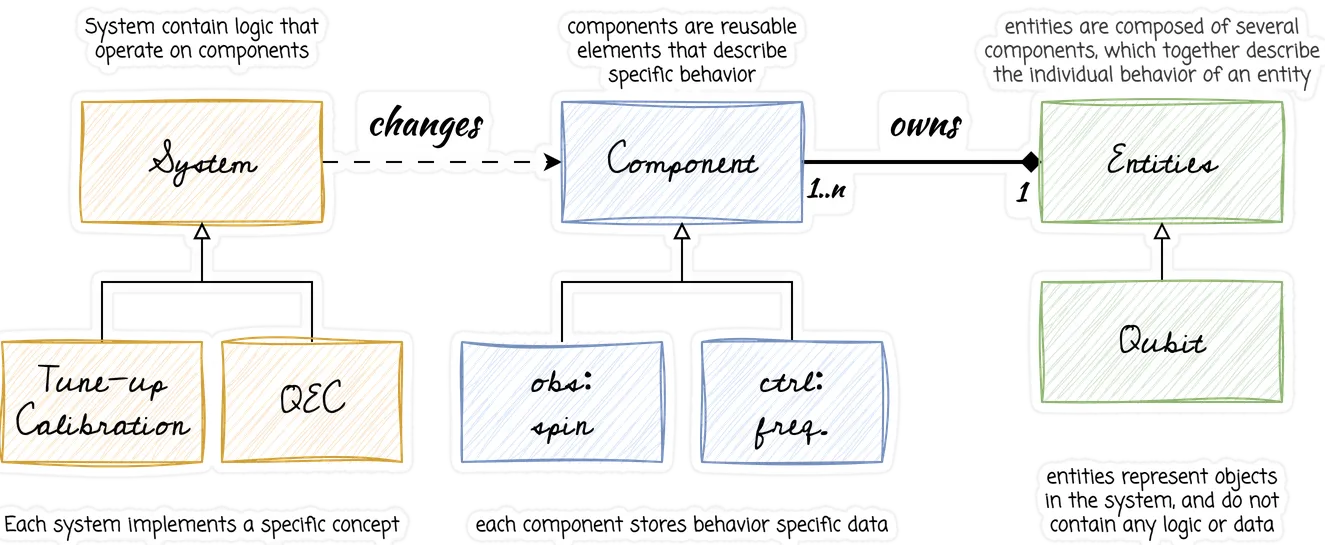I recently came across a post on ycombinator about the Entity Component System (ECS) paradigm, often abbreviated as ECS. One of the first thoughts that came to me after reading the concept in detail was how one could map such a paradigm to the world of Quantum Computing Systems, and, if so, whether it makes sense at all.
As usual, I started to ask ChatGPT for a visualization of the “Entity Component System applied to a quantum control system” (left) and its opposite, “quantum qubit controlled by an Entity Component System” (right). It’s hard to make any sense out of it, except for noticing that, in the first case, the “human” is the system, while in the second, the qubit seems to be the system.


Back to the Entity Component System, the principal advantage of the ECS is that it favors composition over inheritance, separation of concerns, and follows a very data-oriented approach. The ECS architecture separates behavioral logic into systems for two main reasons:
- First, the system-centric design optimizes performance by improving locality, and allowing efficient processing of multiple components in parallel.
- Second, it enforces decoupling between components, as interactions occur exclusively through systems rather than direct component-to-component dependencies.
So, trying to brainstorm how this design pattern could be applied to a Quantum Computing System:
- Entity: The qubit
- Component: The control and readout representation of the qubit
- System: “methods” that operate on components and alter their state.

There are a few things to consider, such as how this works when exposing a logical qubit rather than a physical qubit, and what kind of granularity is required, given the system’s size in terms of qubits, based on current and future requirements.
Overall, this digression about the “Quantum Entity Component System” (QECS) is a simplified approach, but it serves as a starting point for a casual Sunday morning brainstorm, and keeps the ball moving.
If you want to know more about ECS, check the excellent article from UML board, which inspired me a lot for the content and drawings.
References: